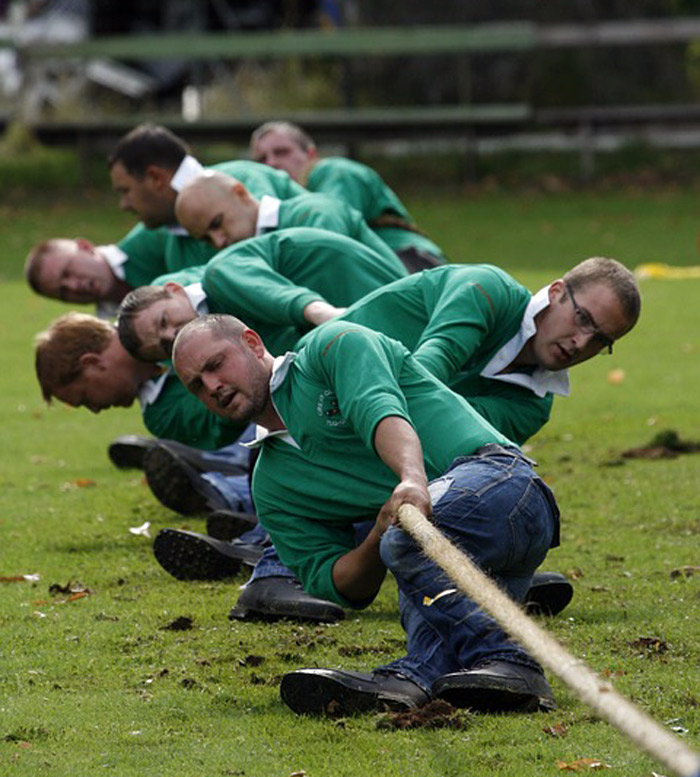
The sport of Tug of War, also known as tug o' war or rope pulling, has a long history. The origins are very old, possibly originally part of a ritual or religious contest. Tug of war was even part of the Ancient Olympics, first being held in in 500BC. You may also be surprised to know that it was even held at the modern Olympics from 1900 to 1920 (see more about Olympic Tug of War competition).
 tug of war team
tug of war teamTug-of-war contests are held between two teams of eight competitors in each team. The teams align themselves at each end of the rope, the aim of the competition is to pull the other along in order to win.
Eight athletes are on each of the two opposing teams. The rope is between 33.5 and 36 meters in length, 10 to 12.5 cm in diameter and usually made of hemp. The best athletes of each team are usually the ones first in line - as well as the anchor, the last man or woman, who may wrap the rope around his or her body. The team pulling the center of the rope four meters past the starting point is declared the winner.
Similar Sports
- Kubihiki — the traditional Japanese strength sport of neck pulling or neck wrestling (no longer praticed)
- Polish Dragon Boat Racing (also called "tug of oars") — teams of six or eight rowers sit facing each other in a dragon boat, and attempt to paddle toward each other (unusual sport)
Other Rope Sports
- Rope Climbing — competitors climb up a rope using their hands.
- Rope Jumping (skipping) — involves a single person or more jumping over a rope that is being swung.
- Roping — a rodeo event where calves or cows are caught by throwing around it a rope with a loop as quickly as possible.


 Upcoming Events
Upcoming Events